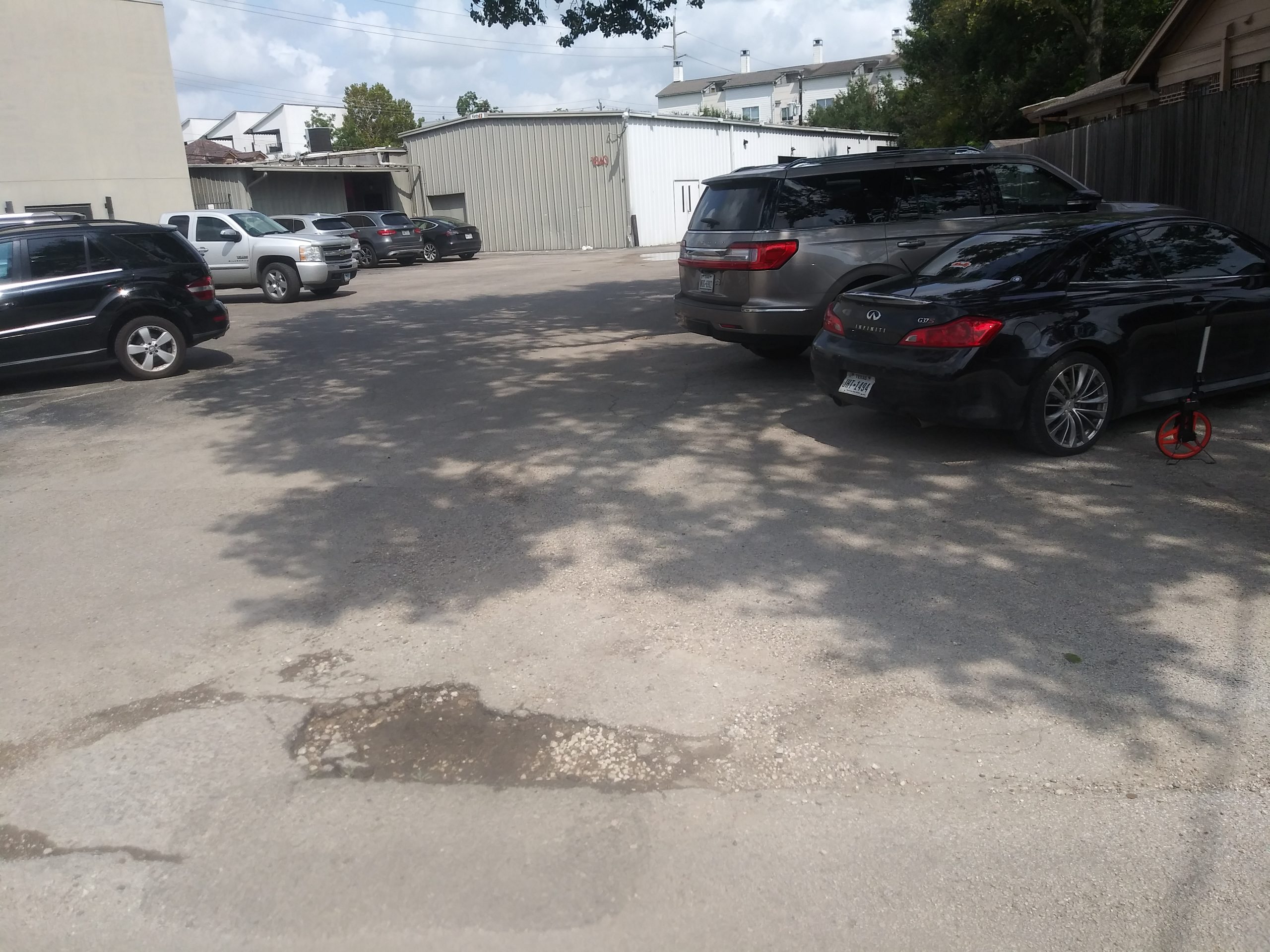Asphalt Repair, Sealcoating, and Parking Lot Striping
2311 Dunlavy Needed New Pavement And Other Additions To Their Parking Lot
2311 Dunlavy is located in the heart of Houston’s Montrose area, where space is at a premium. The property’s only parking lot measures 800 square feet, but before American Paving arrived it was in a state of failure. Parts of the lot were having obvious issues with water collection and intrusion, and aggregate was exposed, and potholes were present.
American Paving’s job was to remove the failed pavement, stabilize the underlying soil and lay a new layer of asphalt pavement over the now-stabilized sub-pavement layer.
How American Paving Helped Restore 2311 Dunlavy’s Parking Area
This project centered on three areas of pavement failure. The largest was a 675-square-foot patch that encompassed the bulk of the main parking lot. The other two areas were 45 square feet and 80 square feet in size. Here’s what American Paving did to restore those pavement patches at 2311 Dunlavy:
- Sawcut around the failed pavement. Asphalt-cutting blades are typically diamond-coated and make precise cuts into the pavement. This is a common form of pavement removal for cut and patch jobs, as it allows APC to target failed spots while leaving intact pavement unaffected.
- Cement stabilized the underlying soil to a 6-inch depth and with a 6-percent mix. During cement stabilization, cement is added to the soil underlying pavement. This results in a form of concrete that is still much stronger and more stable than native soils. Texas has issues with clay soils that interfere with pavement stabilizing, and soil cement provides a better base for new pavement.
- Tack the cement’s vertical edges. Tacking the vertical edges helps the new asphalt adhere to the existing base and enhances durability.
- Lay down a new layer of asphalt. The new layer of asphalt pavement was compacted to a 2-inch depth and consisted of Type-D hotmix, a dense grade designed for vehicle traffic and water resistance.
- Replace and reinstall all carstops.
- Install a 12-foot speed bump.
- Prime and paint three traffic bollards. Those are the rounded pillars you’ll see mark the boundary between a parking lot and building or walkway.
- Apply asphalt sealcoating in two phases. Two-phase sealcoating minimizes water retention as thinner layers of sealcoating cure faster.
- Restripe the parking lot according to agreed-upon design. Striping included stenciling for handicap access and compact cars.
American Paving Can Also Restore Your Parking Lot To A Like-New Condition
As you can see, pavement maintenance and restoration can be a complex job. It’s actually many jobs in one, and the American Paving team has experience in every one of them. That’s why property owners rely on us to repair or replace their failing pavement.
2311 Dunlavy’s new parking area will last for many more years now that American Paving has improved its appearance and function. Contact us today so we can do the same for your pavement.






